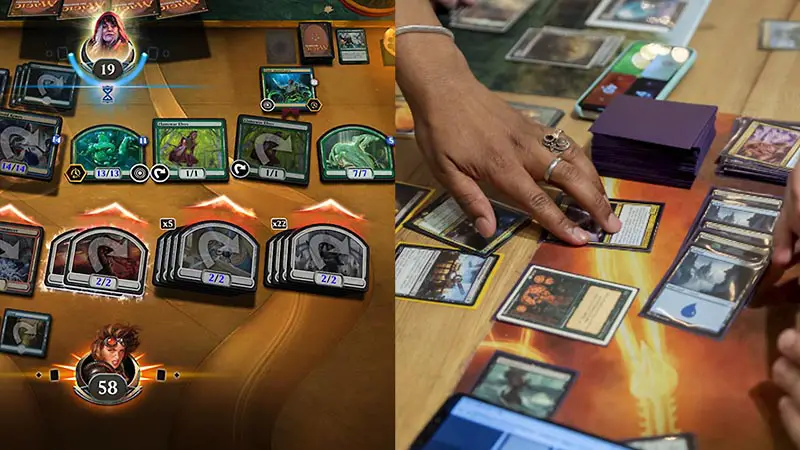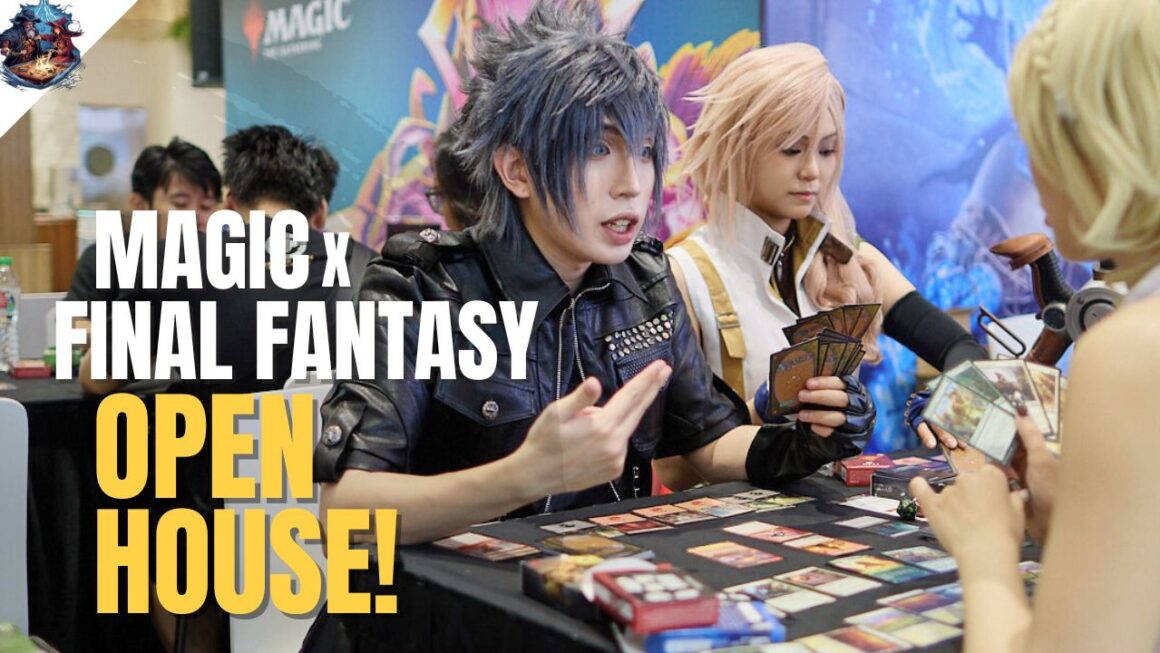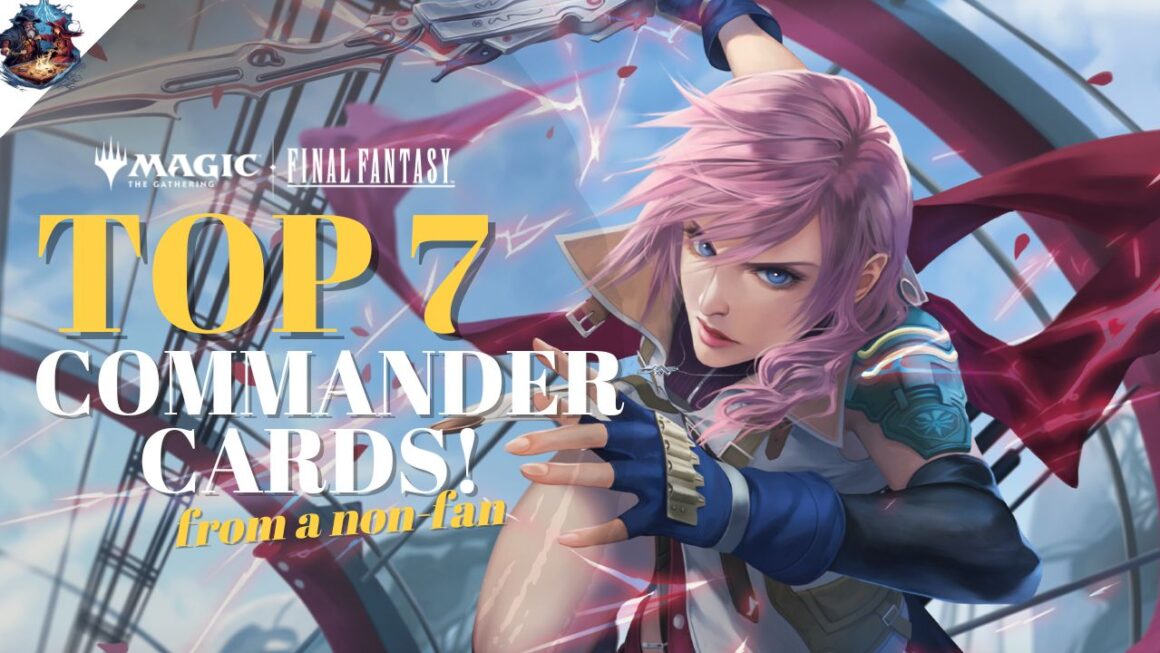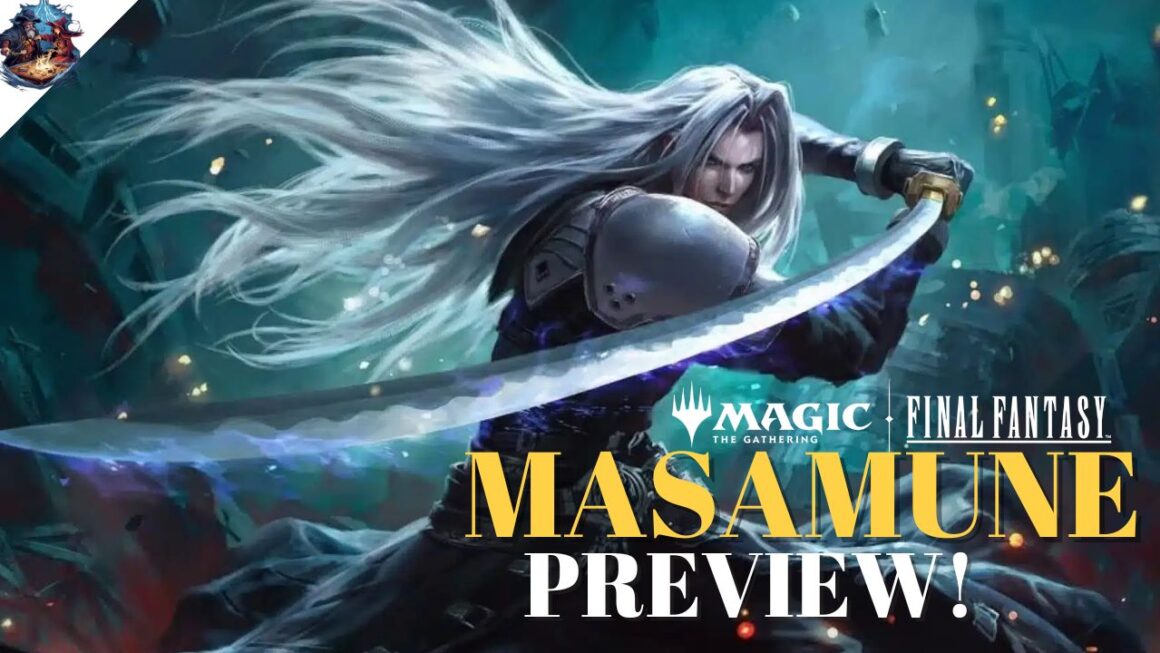You’ve heard the rumours and they’re absolutely true – Magic: the Gathering is one of the first and best trading card games in the world. It’s nearing 30 years old and with no signs of stopping or slowing down. Touted as the most complex game ever by MIT, it can even be a great learning tool for kids growing up, learning language, math, and social interactions in a modern world filled with endless digital distractions.
But where does a new player get started, especially if you don’t already know someone who plays the game? Tap & Sac‘s mission is to promote the game and broaden its player audiences beyond anything we’ve seen before, so we’ve come up with 7 quick and easy steps to get you started. We even tackle the exact question of how to find people to play with. After this, you really have no excuse!
Step 1: Choose Between Playing Paper or Online Magic
We’re well into the 21st Century, and even good old Magic cards have to keep up with the times. That means accessibility and cool visual animations on digital platforms. Although present players often play both paper and online, for a new player like yourself, it’s good to ask: which medium appeals to you more?
Paper is generally more expensive to maintain and upgrade as you progress as a player, but it does have a strong social element that is lacking in so many other games out there. The friendships you forge over a game of Magic is not to be scoffed at – you’ll form strong bonds when you laugh at how you drew the game-winning card off the top of your deck, as your friend grudgingly shakes your hand in disbelief.
For digital, you have the newer MTG Arena platform (Windows, Mac, Android or iPhone) with slick animations and clearer graphics to explain the game’s triggers and events. Arena is generally easier for the new Magic player to get into, compared to the older Magic Online system which is well over 15 years old and the interface looks sorely dated.

If you’re going digital, we do recommend Arena for beginners, for the already mentioned reasons, plus it has a hands-on tutorial and a smaller card pool (called the Standard format) that will make it easier for you to learn the cards.
Step 2: Learn the Basic Rules of Magic
It’s time to get down to the gritty and dirty – learning to actually play the game. The game can be immensely complex, but it started off a simple attack and defending game using fantastical Creatures on top of a kitchen table top. And that’s where new players can start. By first understanding the different phases of yours and your opponent’s turn, you’ll be able to make the first steps to beating your opponent and knowing how cards interact with each other.

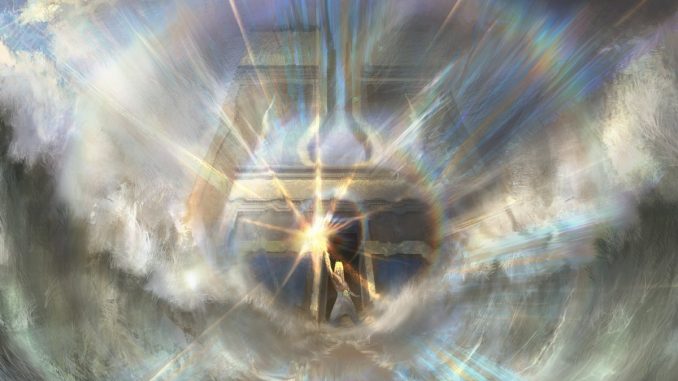
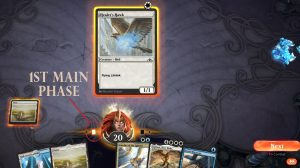
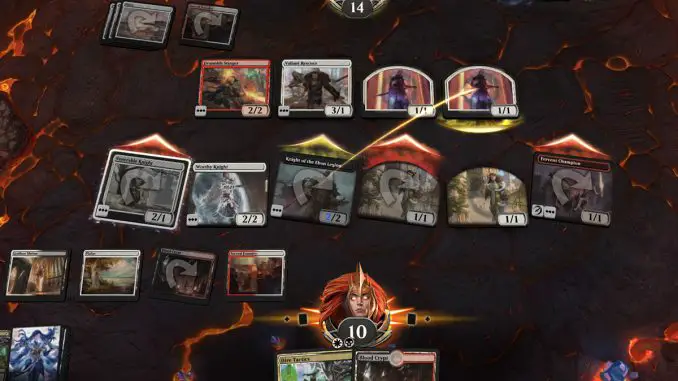

Step 3: Find Someone to Play With
On the digital platform Arena, finding someone to play with will be the least of your concerns. With tens of thousands of players around the world on Arena, the game will automatically match you to someone in seconds. They’ll be strangers, and no one will be on hand to guide you along, but you get better the more you play.
Choose the “Play” mode to get matched with other non-ranked players and you’ll have a better chance of getting an easier game. Standard format will be ‘easiest’ to get started with, as it has the smallest card pool, while Explorer and Historic tend to be more competitive.
For paper Magic, find a local physical store that isn’t too far away to travel to. Here in Singapore we have overwhelming number of stores to play at, but depending on where you live, there could be none for a hundred kilometres.

If there’s a store within reach, find out what weekly or daily events they run – usually there’s at least one a week and over the weekend. It’s a good chance to meet people and at the same time ask them for help as a new player. For example, in Singapore there are close to 20 easily-accessible game stores to play and meet new players. Use Wizards of the Coast’s official store locator to find your nearest game store!
But if there isn’t a store nearby, use social media platforms such as Facebook and Reddit to search for people in your area who play and wouldn’t mind meeting up for casual 1-v-1 games.
Step 4: Build Your Card Collection (Without Spending a Ton)
Paper Magic is sold in sealed products (packs, boxes or randomised cards) or in singles (individuals or stores selling a specific cards). While sealed product prices at launched are fairly standard, it is the secondary market, i.e. the open market, that drives prices up and down. When a card or certain product becomes too popular and high in demand, the market price also shoots up.
As you can imagine, this means paper Magic has the potential to be very expensive, we’ve also covered more of those reasons here. So if you chose the way of paper Magic, how do you grow that card collection?
Start small. Be nice and ask the people or stores you met in step 3 if they have any unwanted Lands, Commons or Uncommon cards that they are not using and want to get it rid of. Chances are they’ll be happy to offload unwanted cards, all the while helping a new player into the game. When you’re ready to invest a little money, around US$20-$40, there are couple of options we recommend:
- Buy “Bulk” Rares – these are Rares or Mythic Rare cards that have not seen much play and thus are thrown into the bargain bin. Go to both online and physical stores and you could find a bundle of 100 bulk Rares for perhaps US$15. These cards won’t make the most powerful decks but they’ll help expand your deck building capabilities, which we’ll cover in Step 6.
- Buy Preconstructed Decks – every year the Challenger Decks or Commander Decks offer good value to just grow your collection. You’ll know exactly what cards are inside these decks, and these are often very playable cards, and you can use these cards to put into other decks.

On Arena, here’s where the freemium model can help you. If you have patience to commit to a simple daily routine of winning a few games on Arena, then it’s possible to grow a sizeable card collection for almost nothing, or less than US$50. I’m a casual player myself, nowhere the playing level of Mythic ranked players, but over 2 years I’ve amassed about 75% of the entire Standard collection, with 200,000 Gold and 20000 Gems in the bank. You can see how I did it in the article below:
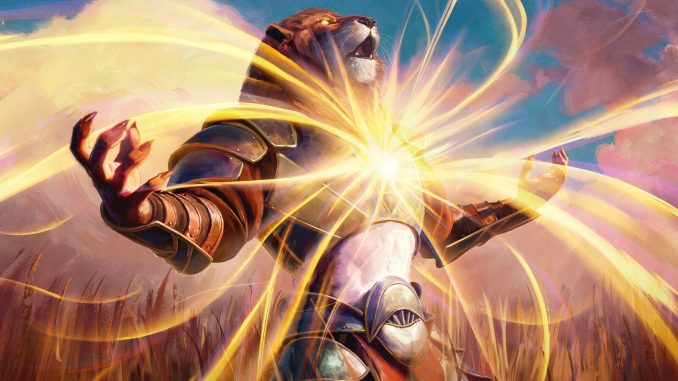
Step 5: Choose What Magic Colours You’d Like to Play
You’ve gotten some cards, but they’re all over the place in terms of card types and colours. Now’s the time to think about specific colours as most people don’t play four or five colours in their deck because you’ll find it difficult to get the right coloured Mana from Basic Lands. Hence it’s very important to start picking your colours at this step.

Step 6: Build Your First Deck for Casual Play
Building decks can be tough, even for well seasoned players. Thankfully, there’s something called the Internet now. Sure the Internet was already alive in the 90s when Magic first came about, but most players then got their info from stores or from game magazines like Duelist or Inquest. Fast forward 30 years, and the web is filled with endless deck lists.

But what kind of deck is good for a new player? You’ve already picked your colours in the previous step (hopefully you’ve stuck to just one or two colours). Start simple and build a simple theme or tribal deck.
Themed decks could revolve around a game mechanic such as Flying, or First Strike. For example if you like evasion and not getting blocked, then building a deck full of flyers could be your first deck.
Here’s an example of a simple themed deck we’ve built – it’s Mono White, and is themed towards aggressive (aggro) play by flooding the board with small Creatures to overwhelm the opponent. The best part is that we’ve intentionally limited our cards to just Commons and Uncommons so this deck can be built for $10 or so. Don’t spend too much on a deck just to learn the game. Start small and when you’re familiar with the game, upgrade your deck.
Tribal decks are built on a specific Creature type, and some of the popular ones in Magic’s history are Goblins, Elves, and Knights. So if you’ve chosen Red as your colour, and want to go with tribal, then Goblins could be your tribe since loads of Goblins are in Red. Elves on the other hand, are most commonly found in Green.
Also, make use of the Internet’s resources to help build your deck! There are several online deck builder available, that allow you to search up cards instantly and add them to your list.

If you’re playing digitally on Arena, it already comes with a built-in deck builder. It’s another of the great perks and conveniences of playing online.
Step 7: Join a Playgroup Friendly to Beginners
We’ve already established that playing Arena online is hugely convenient and you won’t have trouble finding people to play with. However, as a new player, it can be important to have someone to talk through the game, and duking it out in a real-life playgroup can definitely do that.
Sometimes playgroup form by chance, like when you bump into a fellow newbie at the local game store. But if you’re not that fortuitous, looks out for local Facebook, Reddit, or Telegram chat groups that you can join.
We also have a Magic School of Strategy Facebook group that is open for anyone to join. There you can keep up to date with any new articles we publish and you’re free to ask any questions about the game.
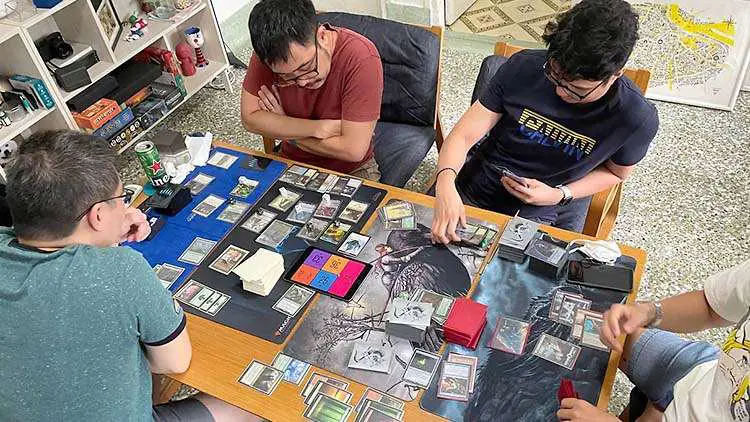
When introducing yourself to a new group, just be upfront about being a newer player and that could slow down the overall gameplay. In our experience most people are receptive and help you get acquainted. Meeting up and playing together is where the Magic starts! Offer to host or bring some snacks for the group and all will be good.
That’s it for our complete guide to get started playing Magic quickly! If there’s anything you’re unsure about, do comment below or drop us an email at lets@.
Time to cast some spells!

